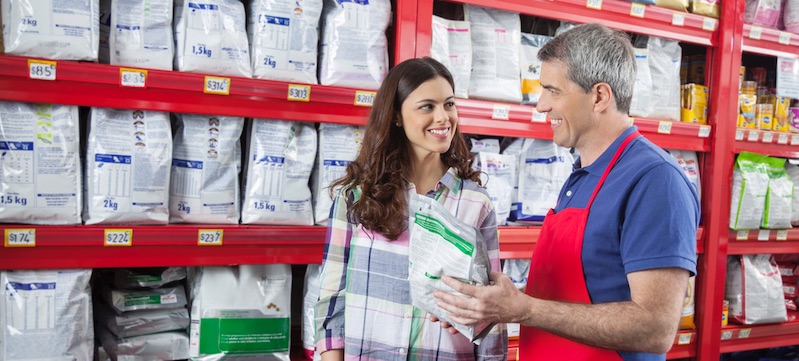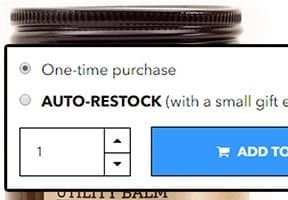
Continuity ecommerce offers convenience to customers while generating substantial returns to merchants. An example is dog food, which can generate high-margin revenue for pet supply companies when sold in a continuity program.
Continuity ecommerce generates recurring revenue via a combination of connected devices and auto-ship functionality. It’s subscriptions on steroids. In “Part 1: Approaches, Expectations,” I explained how continuity ecommerce can build high-margin revenue streams. In this article, I’ll focus on how to make continuity programs a success.
The secret to making continuity work is in the backend. Which products should you offer? How can you maximize the stick rate and minimize churn? When should you deliver products, and when should you collect payments? How many times should you retry a payment to minimize write-offs? How do you avoid cannibalization and substitution?
Let’s start with a story.
A heating appliance company knew that consumers needed replacement air filters for their furnaces, but its customers were only buying a small fraction of what they should be. Multiple factors were at play, including consumers forgetting to change the filters and difficulty in finding the correct part number. A different approach was required.
For the manufacturer, selling replacement air filters was a low-volume, high-margin business. Increasing sales would generate profits. By setting up a continuity program and marketing at the right intervals, the manufacturer was able to dramatically expand its sales of air filters while providing a convenient consumer experience.
Moreover, the manufacturer found that the increase in volume and the ability to forecast demand enabled it to reduce manufacturing costs, which increased profits even further.
The financial impact can be spectacular. I’ve seen continuity programs with customer participation at 25 percent at the end of the first 12 months. By the end of the first year, many such programs experience an increase of 25 percent in product revenue and an increase of 40 percent in overall product-line profit.
…many such programs experience an increase of 25 percent in product revenue and an increase of 40 percent in overall product-line profit.
Let’s take a look at what it takes to achieve those results.
7-step Continuity Guide
With any continuity program, start by looking at your back office capabilities, especially your control and visibility of inventory.
Step 1: Identify the products. Not all products should be on continuity. Start by identifying candidates. Typically, these are high-margin consumable items with a latent demand and an easy and consistent supply. The goal is to increase inventory turns and consequently source products more cheaply.
You cannot afford to run out of stock of a product on continuity. It will cause immediate customer cancellations. Have a clear picture of inventory and prioritize continuity orders over all other business, even if it means creating out-of-stock notices in other channels. A robust order-management capability will make this easy by automatically allocating stock to continuity consumers.
Step 2: Track inventory and sales. Slow-moving consumable items are another option for continuity programs. With careful tracking, you can see where inventory is rising faster than sales. This is a classic early warning sign. Many brands and retailers don’t do this well, and it results in inevitable markdowns.
Products wherein sales lag inventory growth can benefit from temporary continuity programs. The products are also good candidates for a “‘surprise and delight” marketing promotion, which introduce new products or categories to existing continuity customers.
Step 3: Make it easy to buy, modify, and cancel. A continuity program should be easy to sign up, modify and cancel — with a couple of taps in an app, with a chatbot, or with a simple phone call. Beyond making it easy, focus on preventing churn in the first place via “save the sale” type programs.
Step 4: Understand churn patterns. Auto-replenishment programs can expect a churn problem — typically 60 percent of customers after the third delivery and 80 percent by the sixth.
It is critical to understand the customer drop-off points. In my experience, they vary among products, just as the optimal delivery interval will be unique to each product. Machine learning can significantly help. It can determine when to automatically ship products, anticipate the critical churn points, and trigger remedial actions. By the sixth turn, for example, you can retain 50 percent of customers. AI is one of the key secrets in continuity.
Step 5: Surprise and delight. One of the best ways to get ahead of churn is a series of surprises to delight customers and keep them interested. By intervening just before the drop-off point, a free sample can significantly reduce churn while introducing continuity customers to other product lines. For example, a customer buying dog food on continuity could receive a surprise chew toy with a delivery, delighting both owner and dog and reducing the chances of cancelation (and increasing the likelihood of purchasing dog chews on continuity).
Step 6: Separate deliveries and payments. Traditional auto-replenishment programs collect payment at the point of delivery. This reinforces the cost of the program to the customer, perhaps when they weren’t quite ready for the next delivery. It is not optimal and will increase churn. Separating deliveries from collections will help customers view the recurring payments as a normal household expense.
Step 7: Optimize collections. By billing on different days of the month and week, you can reduce continuity churn and optimize high conversion periods, such as proximity to the weekend and payday. Experiment to find your own magic formula or use AI to do it automatically. The same applies to payment retries: How many times should you retry given each retry typically costs $1? Optimizing when to collect payment and when to retry can make a huge impact on retention rates.
Experiment and Learn
Continuity, done well, can deliver strong results. But it takes effort. You may need to change your order management system and incorporate machine learning and optimization technology. With the right mindset and a willingness to experiment and learn, most brands and consumer-packaged-goods companies can achieve significant increases in revenue and profit.




